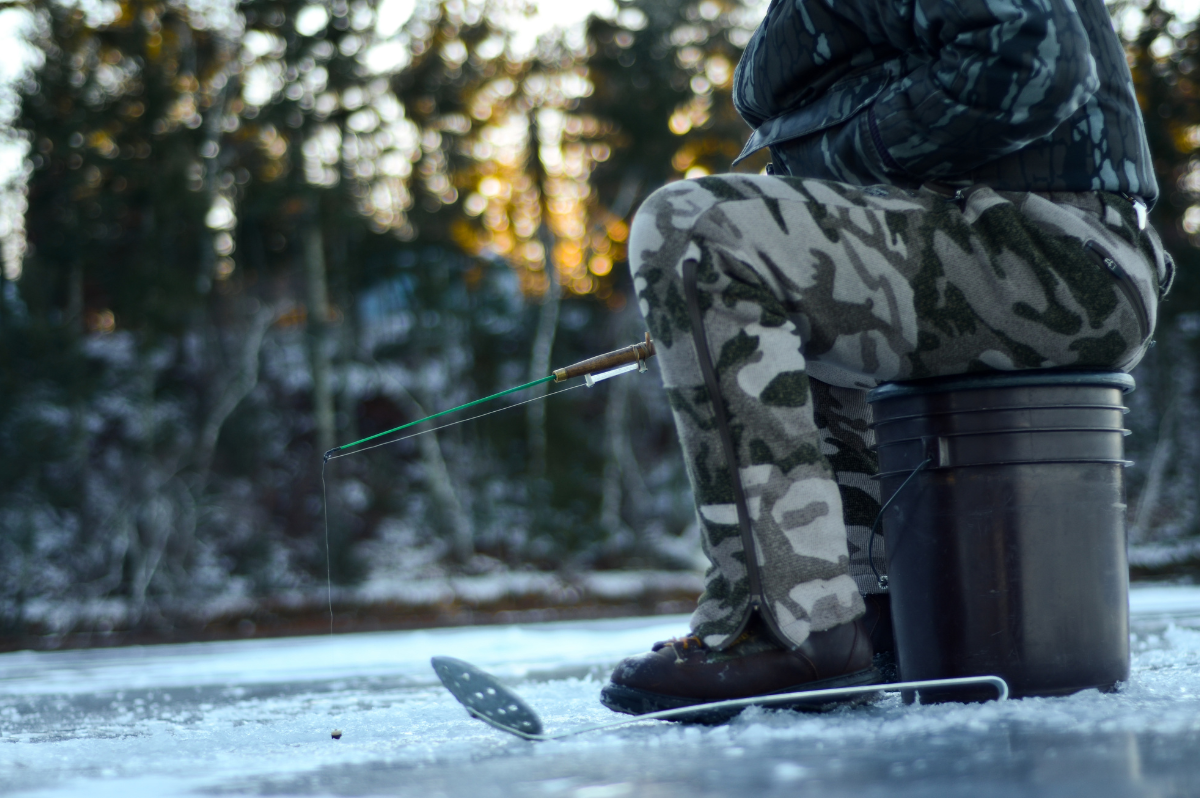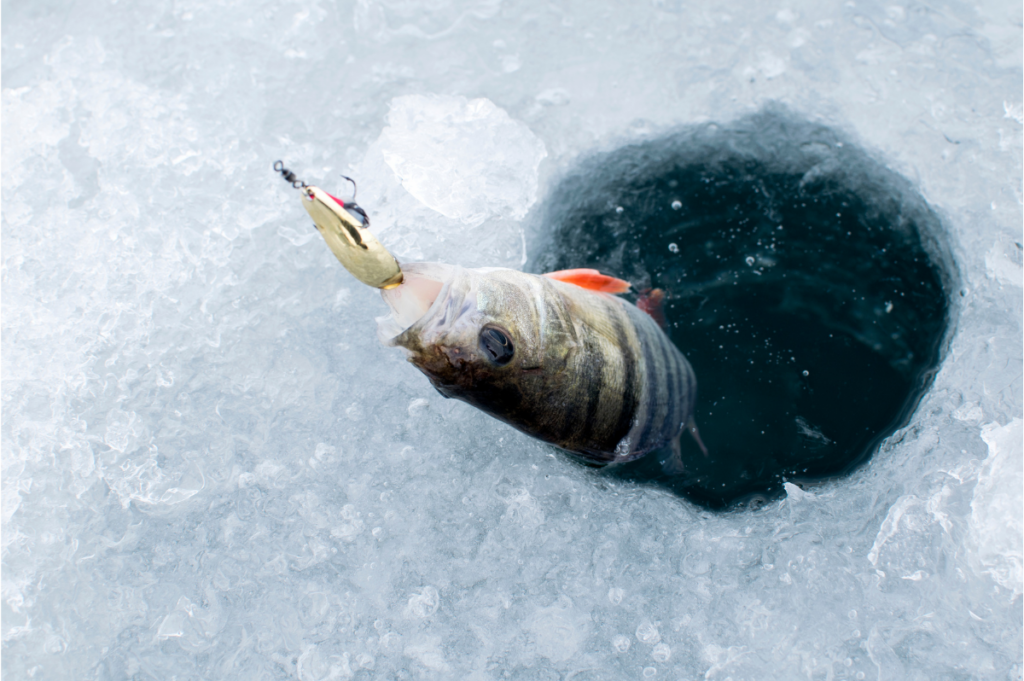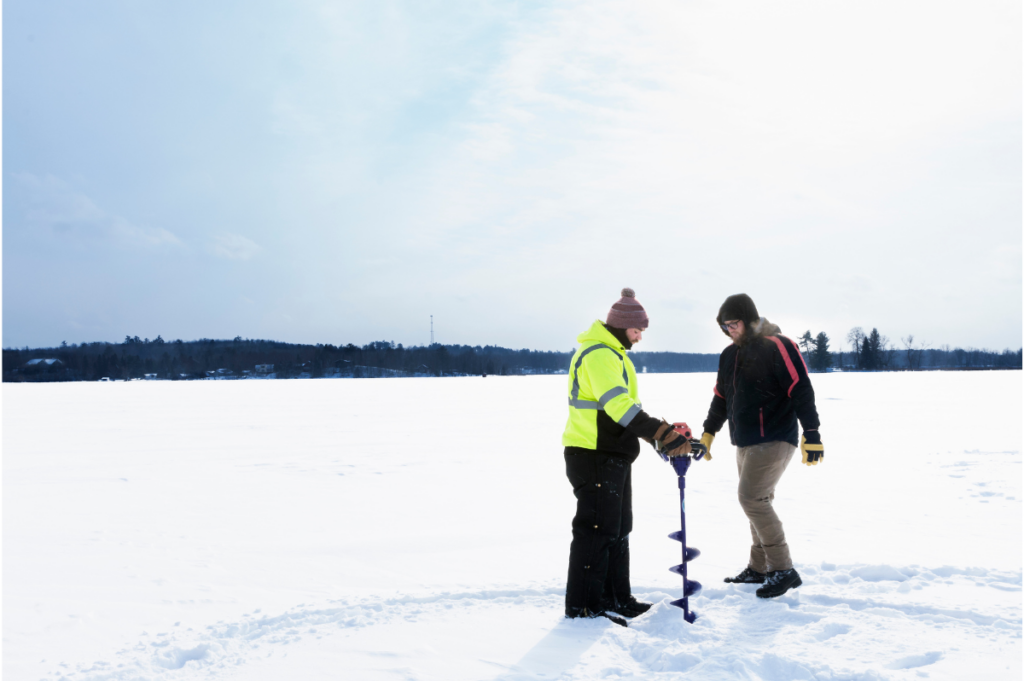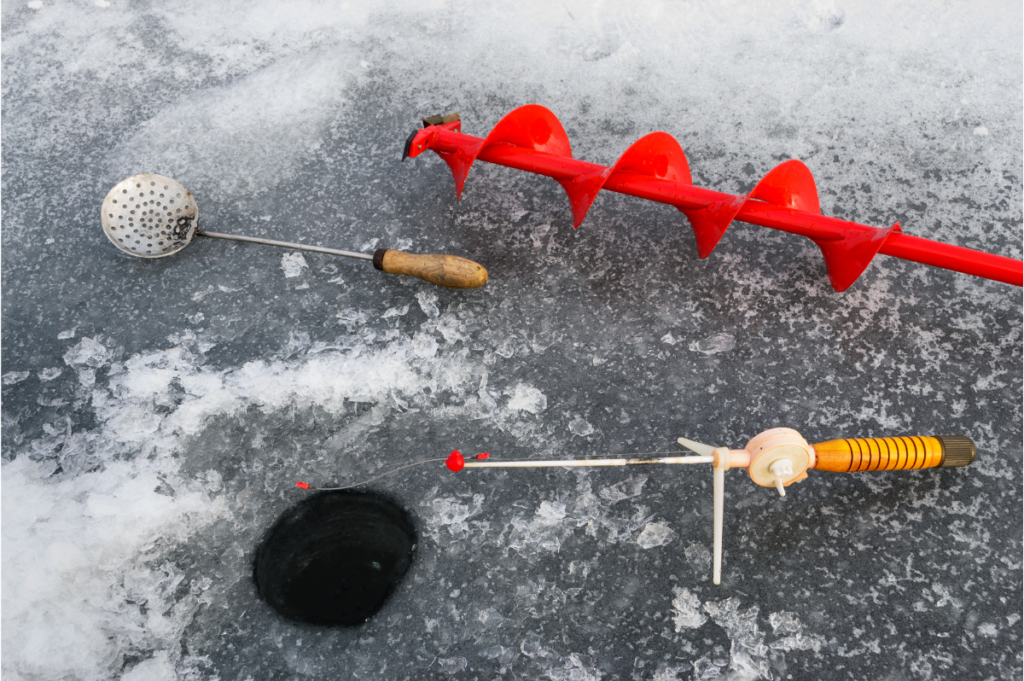
 0
0 
Ice fishing is a popular winter activity where anglers fish through holes drilled in the frozen surfaces of lakes and ponds. This unique form of fishing often involves specialized equipment like ice augers for drilling holes, ice fishing rods and reels, and jigs or live bait for attracting fish. Some anglers use shelters or huts to stay protected from the harsh winter elements. Safety is a key aspect of ice fishing, with precautions necessary to ensure the ice is thick enough to support the weight of the angler and their gear. Despite the cold conditions, ice fishing offers a rewarding outdoor experience, often enjoyed as a social activity with friends and family.


Safety should always be your top priority when ice fishing. With the right precautions and equipment, you can enjoy this cold weather activity without any worries.
First and foremost, always check the thickness of the ice before stepping onto it. This is crucial as falling through thin ice can be life-threatening. A general rule of thumb is that the ice should be at least four inches thick for walking and five inches for snowmobiles or ATVs. To be extra cautious, use an auger to drill holes in different areas of the lake to check the thickness.
Another important tip is to dress appropriately for the weather. Layering is key, as it allows you to adjust your clothing based on the temperature and activity level. Avoid cotton as it retains moisture and can make you feel colder. Instead, opt for synthetic or wool materials that wick away sweat and keep you warm even when wet.
When setting up your fishing spot, make sure to clear any snow or debris from the ice. This will prevent slips and falls. Also, avoid areas with currents or moving water as the ice may be thinner in these spots.
When drilling holes in the ice, make sure they are spaced out at least 10 feet apart from each other. This will distribute weight more evenly and reduce the risk of falling through. It’s also important to wear ice cleats or spikes on your boots for better traction on slippery surfaces.

Now that you’re all set up and ready to fish, remember to dress in layers and stay hydrated. The cold weather can often cause dehydration as you may not feel as thirsty, but it’s important to drink plenty of water throughout your
Ice fishing is an exciting winter activity that requires patience, practice, and a respect for nature. As you embark on your ice fishing journey, remember to start with the basics, gradually mastering more advanced techniques as you gain experience. Most importantly, stay warm, stay safe, and enjoy your frosty adventure!
Note: Always check local regulations regarding ice fishing. Some areas have specific rules about the size and number of fish you can catch, as well as the type and amount of equipment you can use.

 0
0